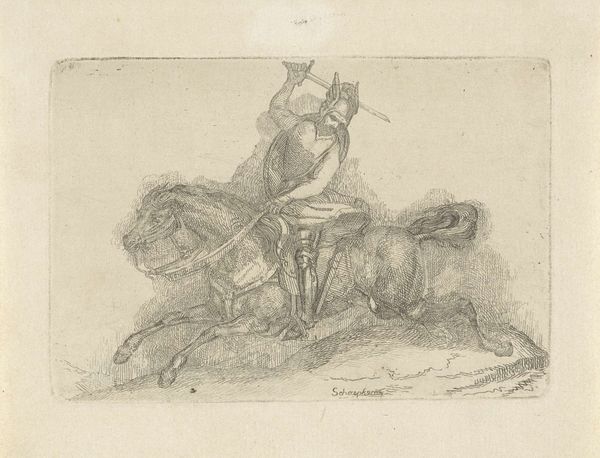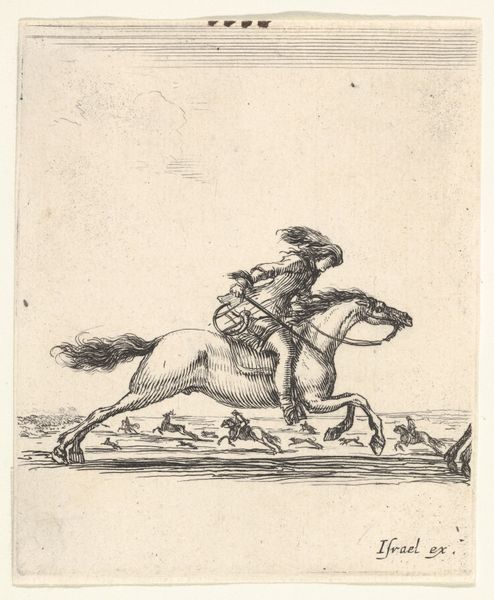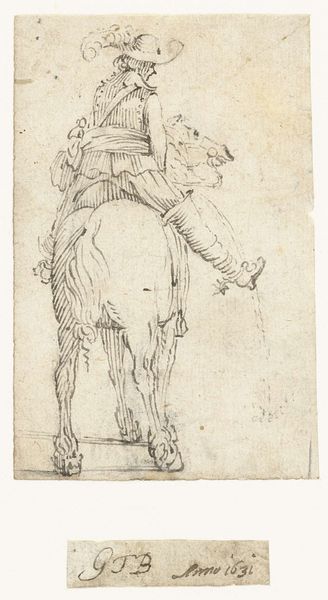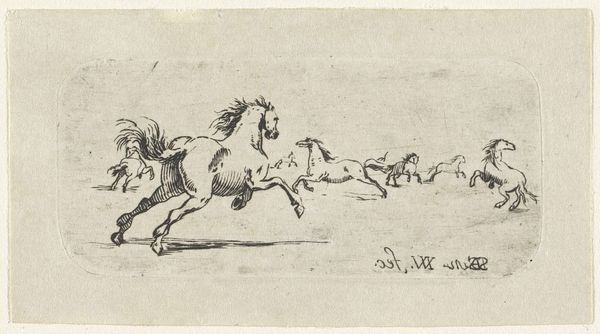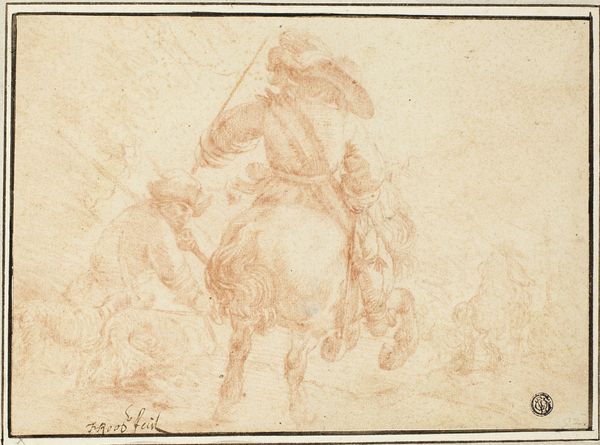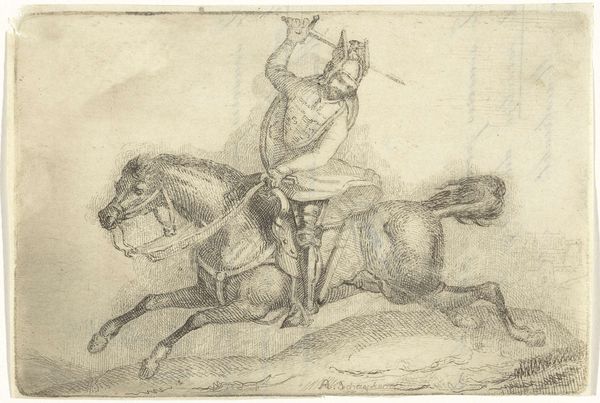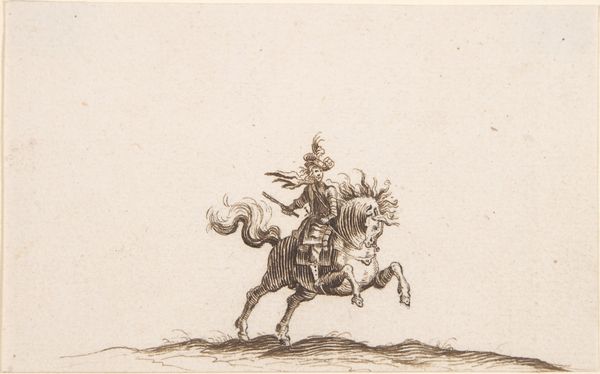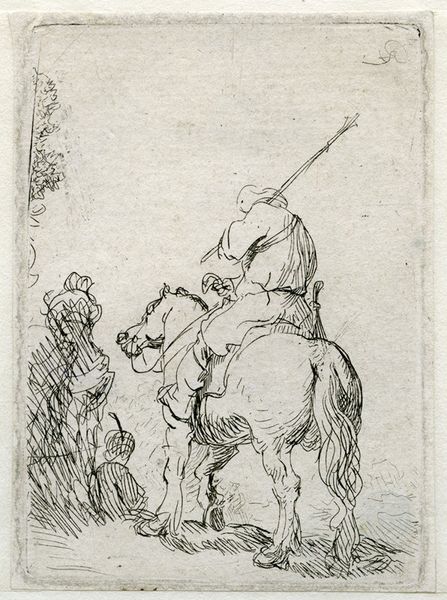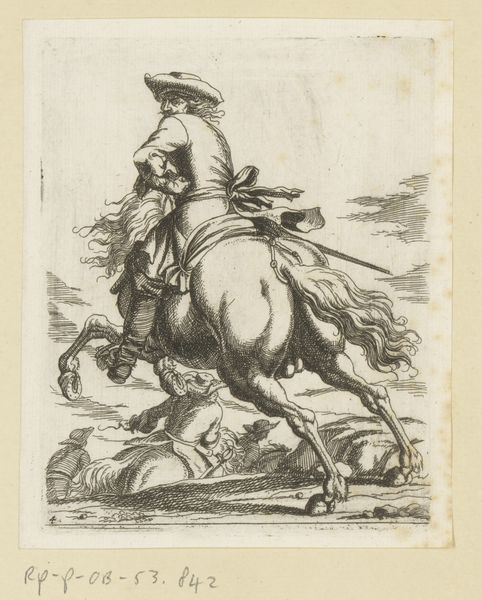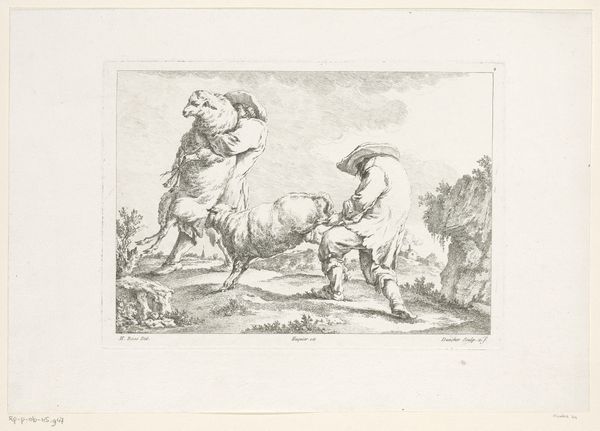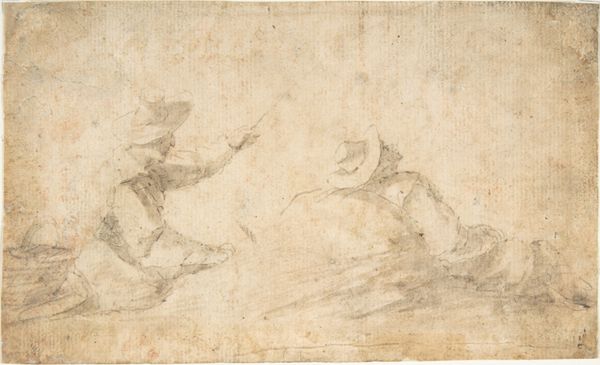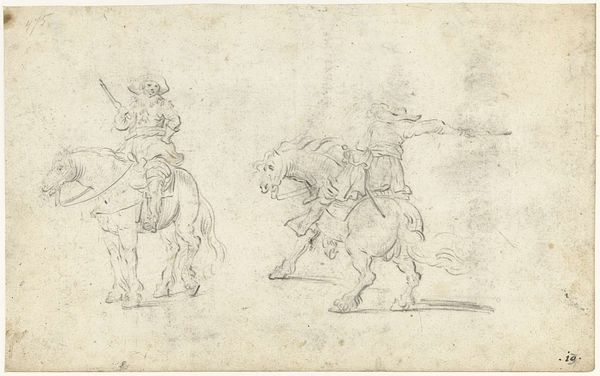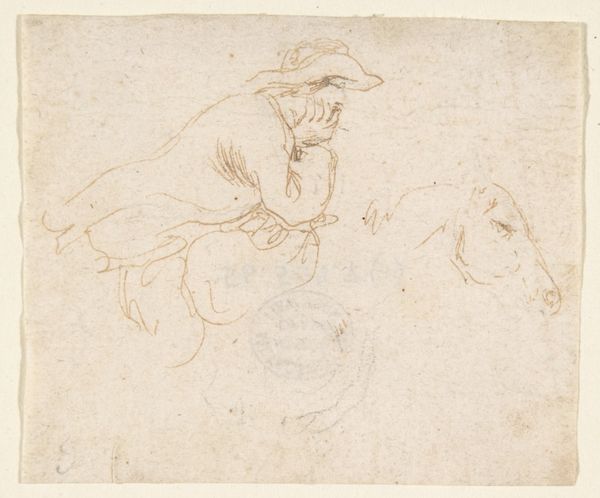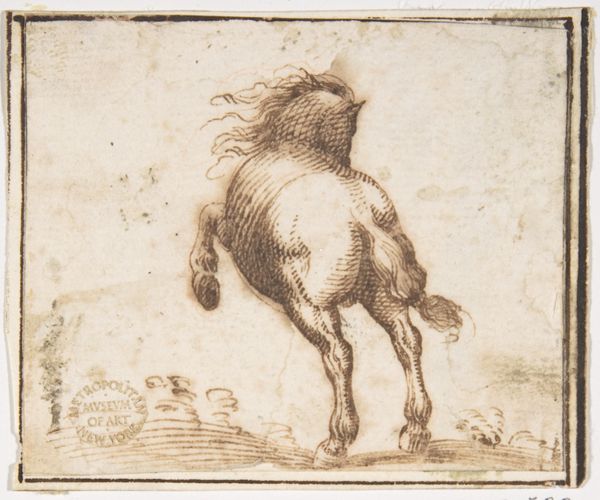
drawing, pencil
#
drawing
#
baroque
#
landscape
#
figuration
#
pencil
Dimensions: height 150 mm, width 198 mm
Copyright: Rijks Museum: Open Domain
Editor: We're looking at "Rearing Horse with Rider" by Gerard ter Borch II, made around the 1630s. It's a pencil drawing at the Rijksmuseum. There’s a powerful energy to this sketch – the horse rearing up like that. How would you interpret the meaning behind such a dynamic pose? Curator: This sketch offers an intimate glimpse into the world of Baroque equestrian imagery, which often functioned as a powerful tool of state and self-fashioning. Equestrian portraits were typically commissioned by the elite to project power, nobility, and military prowess. Ter Borch, however, seems to be exploring something more subtle here. Do you see any evidence that the sketch might relate to a larger, more formalized commission? Editor: I don't see much of the aristocratic imagery you describe. It looks almost like a study, a quick capturing of movement. There is not enough context in the scenery. I'm curious, why would he even produce such studies? Curator: Exactly! The drawing suggests an interest in the pure dynamics and theatricality of the horse-rider relationship, which might then be integrated into history paintings. The Baroque period embraced drama and movement, and the rearing horse became a visual shorthand for these qualities. Could this reflect an emergent sense of public display influencing even preliminary sketches? What does this emphasis on dramatic, public facing imagery tell us about the 17th Century elite? Editor: So even what looks like a simple sketch carries echoes of social and political performance! I hadn't considered how deeply ingrained this idea of display was. Curator: Indeed. And that’s where art history bridges the seemingly personal artistic endeavor with the larger forces that shape both its creation and reception. It's really exciting.
Comments
No comments
Be the first to comment and join the conversation on the ultimate creative platform.
